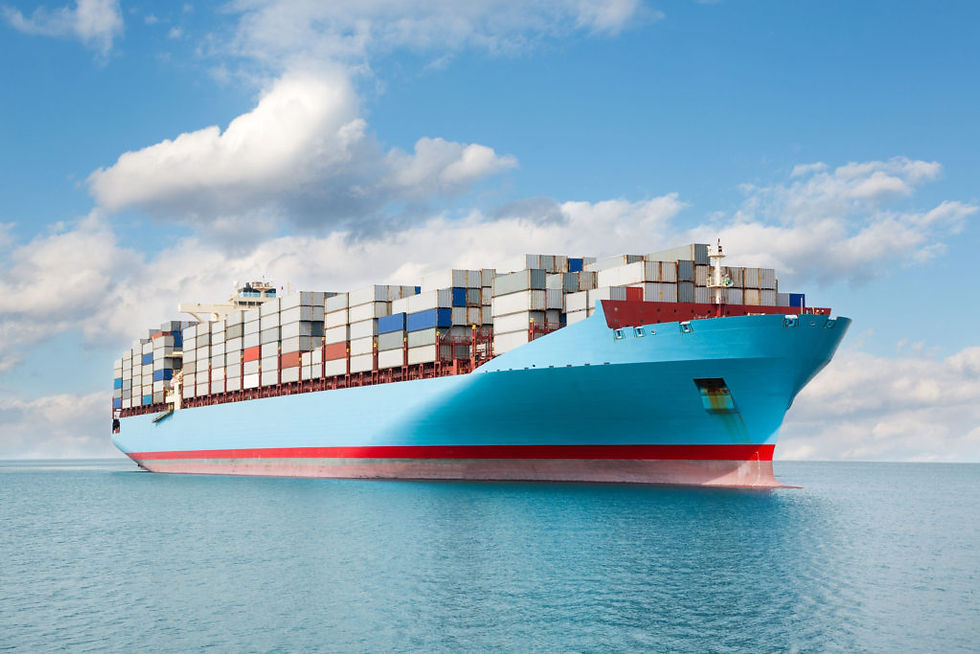The Top 6 Misconceptions of Sea Freight
- Jodie

- Feb 5, 2018
- 3 min read
Sea transportation is the largest mode of logistics in the world. It constitutes 90 percent of the global logistics industry. Almost every trade or business will have had involved sea freight at any point. However, there are misconceptions amongst individuals regarding this form of transport, which could lead to unnecessary misunderstandings or delay so guys, get familiarised with the facts.

Shipping constitutes 90% of the logistics industry.
1. I can ship anything I want
FALSE.
You don’t have all the freedom in the world to ship anything you wish. Everything you stuff into the container is mandatory to be listed on the packing list, of which is to be submitted to customs for inspection and clearance. Every country has a set of regulations for the goods trading. Some products are prohibited while some others may require special permits or licenses to import or export them.
For example, controlled goods such as vehicles require a permit to be imported into Malaysia. For the best advice, please contact your freight forwarder for the most professional consultation.
2. Sea Transportation is EXPENSIVE
Well, every service does come with a cost but compared to other modes of transport, shipping falls under the highly cost-efficient category. As mentioned above, shipping is the most widely used mode of transportation and having that said, it is pretty self-explanatory that shipping is the most cost-effective option.
3. The items I move is private and do not subject to any third party assessment

While inspections happen on an extremely rare basis, you are always advised to abide by rules and regulations. In the case that the customs suspect something, they do posses the rights to assess the products you ship.
Globally, US probably has the highest percentage of possibility of inspections though many other countries have, over the years, gotten more stringent in the clearance regulations.
4. Shipment’s estimated date of arrival (ETA) is accurate for my planning

According to a latest study, ONLY 74.7% of vessels arrived on time. In simpler understanding, one out of four shipments arrived late. So if you think you can plan precisely according to the ETA, think again.
Delay in arrival time is a common occurrence and can be a result of multiple factors including natural phenomenons such as bad weather and hurricanes or due to the large volume of movement.
The idea is to allow an interval of buffer in your plans as you will never know what could possibly go wrong during the transportation.
5. Shipping is overly complex
Well, it’s both a yes and a no. To be downright honest, the arrangement of a freight and with all the paperwork that goes into the process and the potential problems that could arise, nobody can ever guarantee that all your shipments will be completely smooth sailing.
However, these complications aren’t too difficult (or impossible) to overcome. Work with a freight forwarder who’s experienced and reliable and these issues will be greatly minimised. Even at times that things happen, you know they would be there to back you up and act in the best of your interest.
6. Shipping rates are standard all the time
It’s far from the truth – sea freight transport rates are subject to regular fluctuations and factors beyond our control such as seasonal, political or economical. The best way to understand the patterns or at least, getting yourself prepared with the predictability of how far the rates could run is to engage a freight forwarder who has high volume of consistent shipments. They should be able to gauge an estimated rate based on your commodity and requirements.
************************
To understand more about sea transportation, the intricacies of how it works or the various methods of how to resolve potential issues, feel free to seek us for expert advice. Multi-Trans’s vast experience of dealing with various liners with clients across diverse industries gives us an advantage of having a broad idea about how to expedite things to minimise delay, costs and hassles.





Comments